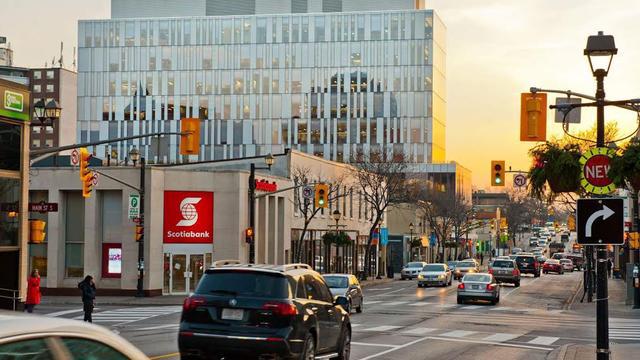5 Biggest Challenges Facing Brampton Today
Published February 9, 2017 at 4:08 am

Roughly 40 people choose to move to Brampton every day, say city officials.
With a population representing people from 209 distinct ethnic backgrounds who speak 89 different languages, Brampton is experiencing growth to the tune of 70,000 people, according to Census data released Wednesday.
But it’s not all roses in the Flower City.
Here are some of the challenges Brampton is facing.
5) Education
Calls for proposals were launched by the province last month following the October 2016 announcement of a future university in Brampton (and Milton). The province’s plan is to create new post-secondary facilities focused on science, technology, engineering, arts and mathematics – or STEAM.
Brampton, the ninth largest municipality in Canada, is the only Top 10 city without a major university campus. An economic impact study of a new facility in Brampton estimated construction would add more than 1,800 jobs, with ongoing operations resulting in at least 1,500 jobs.
Brampton Mayor Linda Jeffrey campaigned on a university bid when she ran for municipal office in 2014 and for good reason–it’ll be a huge boon to the city. While the wheels are in motion, there are still quite a few issues to sort through. The city still has to select a university partner and determine where the new facility will be built. It also has to figure out how much funding it could potentially be on the hook for after the $180 million promised by the province is split between it and Milton.
4) Council’s shenanigans
It’s only natural for people who work high stress jobs in close quarters to occasionally become prickly and impatient with one another. People are people, after all. While confrontations are normal in any city council, Brampton council has had its share of disagreements.
As of now, City Hall is being renovated and Mayor Jeffrey has indicated that she prefers all council members work out of the same floor in the city hall building. The move raised some eyebrows, since council members have had public spats over joint Twitter accounts that disappeared and the thorny issue of exempting taxi drivers from English proficiency tests.
With Twitter wars and alleged deal-making and vote trading, Brampton’s elected officials have sometime had a difficult time reaching consensus. Can Mayor Jeffrey’s leadership mend broken fences?
3) Light Rail
The proposed $1.6 billion Hurontario Street LRT line from Mississauga’s Port Credit GO station to Brampton’s downtown core was rejected by city council in 2015.
Alternate routes have been proposed, and right now it appears that the track will end at Shopper’s World instead of continuing along Main St.
Funding provided by the federal government must be used by the end of 2017 and it looks like the city will be on the hook for any alternate route they ultimately decide on. With the city growing consistently (take a look at the most recent census), Brampton needs to make decisions about higher-order transit (especially since the city will be enjoying increased transit funding due to enhancements to the provincial government’s gas tax program).
2) Social City
The city is projecting a population increase of 35,400 in the 18-to-24 age group between 2011 and 2021. What does Brampton have to do to get residents to stick around instead of taking their wallets to Toronto? It could probably start by reaching out to and forming partnerships with more festival organizers. If Brampton had a signature festival, both locals and out of towners would be compelled to give the new event a shot.
The city could also continue to work on attracting new and interesting businesses (think interesting shops, activities and restaurants) to Brampton, as people love new and exclusive attractions.
1) Affordable Housing
Brampton has a rental apartment vacancy rate of 1.2 per cent with an average cost of $1,186 per month for a two-bedroom apartment, according to the 2016 CMHC Rental Market.
Hopefully the city, region, province and federnal government can continue to work together to address serious affordability issues in the future.


